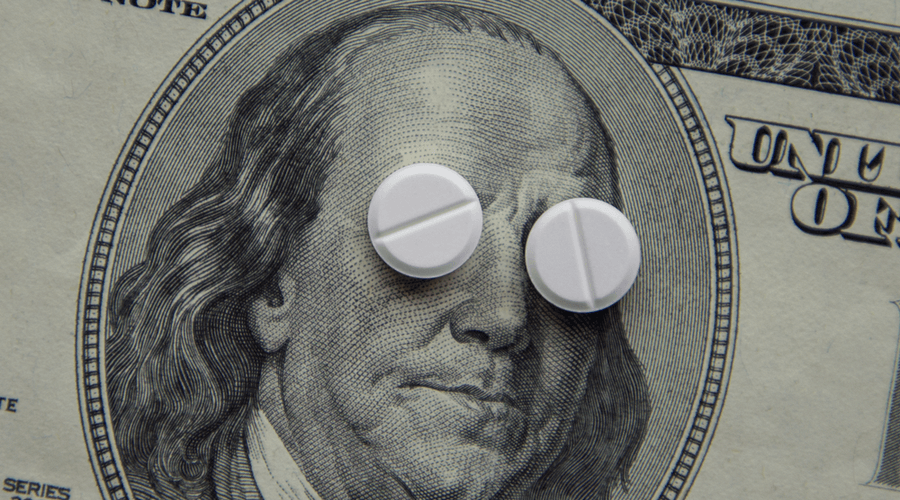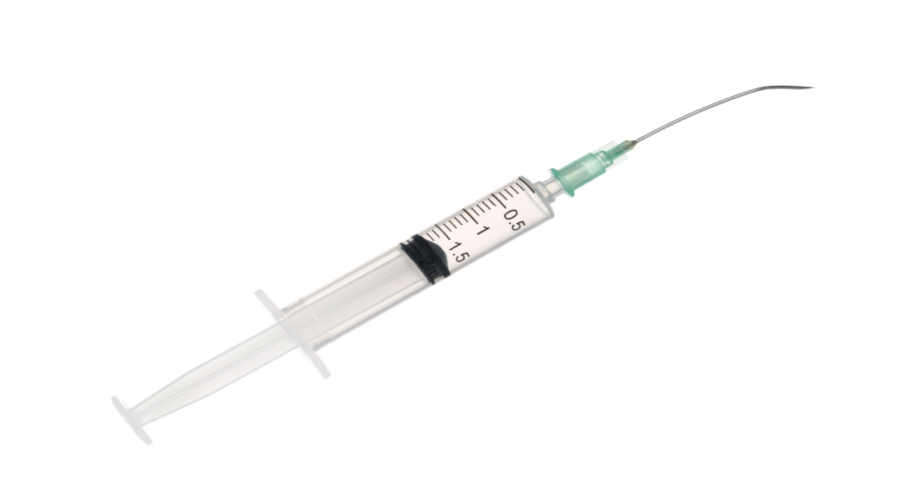Twenty years ago, Blockbuster was king of the movie rental industry. It sat safe on its throne, living off the same business model year after year until a newcomer upended its rental kingdom with a different way to do things. Netflix offered customers a mail-order subscription service with no late fees, forever changing consumer expectations. But Blockbuster didn’t budge and continued to rely on the tried-and-true rental model.
Then as media became more digitized, Netflix foresaw it couldn’t simply dispense discs and continue to thrive. Even though it had already revolutionized the industry, Netflix transformed its service, becoming the first platform for on-demand streaming and founding its own film studio that now wins Emmy and Academy awards. Blockbuster went bust, and nearly every movie rental retailer that didn’t evolve died.
Experts and owners in the independent pharmacy industry realize that pharmacy business is on the same sort of brink, and many will either go the way of Blockbuster or the way of Netflix. Will pharmacies stick to dispensing, or will they diversify?
“It is becoming increasingly important that pharmacists practice at the top of their license and training as margins continue to narrow for dispensing services. And, likewise, it is critical that plans and payers reimburse pharmacists for the provision of enhanced services beyond medication dispensing,” said Laura A. Rhodes, PharmD, assistant professor of Pharmacy Practice and director of the Enhanced Community Pharmacy Services Fellowship at Palm Beach Atlantic University.
If you’re looking to add some alternative revenue streams through pharmacy services, Rhodes has provided a number of options that third parties will reimburse.
The first two services Rhodes mentioned were medication therapy management and immunizations, both of which receive compensation from health plans at various rates without need for collaborative practice agreements. Because 80 percent of pharmacists offer immunizations and 73 percent offer MTM, we left them off this list. We focus on less commonly adopted services.
There are also several profitable services that patients will pay for out of pocket, like point-of-care testing, health screenings, lab tests, and home delivery. This article outlines only the services that are covered by CMS, private insurers, or other payer partners like provider offices and hospitals.
1. Remote patient monitoring
Rhodes mentioned an emerging service called remote patient monitoring, which “involves the use of digital technologies to capture medical and other health data from patients that is electronically transmitted to pharmacists for assessment.”
Through a partnership with a provider, the pharmacy supplies a monitoring device to the patient, trains the patient on the device, and then monitors the patient’s readings—for a total of at least 20 minutes a month. The provider bills the payer, typically Medicare, and reimburses the pharmacist based on the agreement.
When the readings require attention, clinically referred to as “escalation,” the pharmacist calls the patient to understand the situation and provide the necessary treatment, whether that’s counseling or a referral to the supervising medical provider.
2. Chronic disease management
Pharmacies can get paid for a variety of chronic disease management services. “There are many examples of this, and the level of involvement may vary from informal (patient counseling or consultations at the pharmacy counter without a fee) to more formalized services in collaboration with other healthcare providers as a billable service,” Rhodes explained.
One billable service is chronic care management (CCM), which entails coordination of care activities, disease state management, and addressing preventive care measures, among other services dictated by the particular partnership. To get reimbursed by Medicare, each patient needs to receive a minimum of 20 minutes of care between the pharmacist and provider each month. CMS reimburses $64.03 for those 20 minutes.
3. CPESN USA
“Some independent pharmacies are utilizing clinical integration as a pathway to payer opportunities for enhanced services,” Rhodes said. CPESN USA is a nationwide clinically integrated network of pharmacies that focus on providing enhanced services beyond medication dispensing.
The CPESN USA network contracts directly with health payers, purchasers, and partners to get pharmacies paid for enhanced services. Payment methods vary for each agreement and include fee-for-service, fee-per-member, or pay-for-performance.
CPESN USA has minimum standards for joining the network, such as face-to-face access, medication reconciliation, clinical medication synchronization, immunizations, comprehensive medication reviews, and personal medication record documentation.
4. Diabetes prevention
Medicare will reimburse pharmacies for participating in the National Diabetes Prevention Program (DPP). The program offers group-based lifestyle education sessions to adults with prediabetes or who are at risk for diabetes. This can be offered by the pharmacy without a collaborative practice agreement or state-wide protocol but requires an approval process through the CDC, which requires lifestyle coach training and a certain quota of enrollees.
Pharmacies can also offer a Diabetes Self-Management Training/Education (DSMT/E) program, which includes glucose self-monitoring instructions, diet and exercise education, an insulin treatment plan, and motivation for beneficiaries to use the skills for self-management. To qualify for reimbursement, pharmacies must be accredited by the Association of Diabetes Care and Education Specialists (ADCES) or the American Diabetes Association (ADA). Payment for both diabetes programs is usually fee-per-member.
5. Hospital discharge
Sometimes called transitions of care, hospital discharge services involve delivering meds prescribed by the hospital, performing medication reconciliation, and checking in regularly for a month. Medicare and private insurers will reimburse for the services, typically using a fee-for-service or a fee-per-member model, which can accumulate quickly and substantially. Some pharmacies report a 300 percent return on investment for transitions of care services. Hospitals may also pay for discharge services directly to help keep down readmissions.
6. Annual wellness visits
Under a collaborative agreement, pharmacists can conduct annual wellness visits inside the office of a provider. These include reviewing medical and medication history, measuring vitals, providing necessary screenings, and offering medical advice or referrals. Rhodes referenced a couple of studies demonstrating the monetary value of pharmacist-led annual wellness visits for physicians’ offices. One study concluded, “Pharmacist-provided collaborative clinical services in the primary care setting appear to … potentially increase[e] the practice’s annual MIPS reimbursement by $16,920.”
A portion of that money goes to the pharmacist, depending on the agreement specified in their contract. Most contracts use incident-to billing, but pharmacists could negotiate other types of payment with the provider.
7. Test-and-treat
“Test-and-treat takes point-of-care testing to the next level,” Rhodes said. Typically when patients test positive on POC test, pharmacists must refer them to a medical provider for treatment. But in some states, pharmacists can “treat” the condition by prescribing and dispensing medicine.
This is usually allowed for minor, nonchronic health conditions, though some states allow treatment of even chronic conditions under a collaborative practice agreement. Legality varies widely. Some states have completely legalized some form of test-and-treat, others allow it under a statewide protocol, and some require a collaborative practice agreement. Each instance outlines different criteria and different requirements for qualification, so pharmacists need to become familiar with their state’s rules.
Payment methods are still in flux, but besides cash payment, pharmacies can partner with providers on a “collaborative billing model with shared performance-based payment incentives.”
8. Covid-19 testing, vaccines, therapeutics
“Pharmacists have served as a tremendous resource to the public by vaccinating millions of Americans against Covid-19,” Rhodes said. Under the Public Readiness and Emergency Preparedness (PREP) Act, pharmacists can serve as the ordering provider for Covid-19 diagnostics, vaccinations, and therapeutics as permitted by each product’s emergency use authorization (EUA) or FDA approval criteria. “This is an important distinction as it supersedes state practice acts to permit pharmacists in all states to order and administer Covid-19 vaccines.”
Each vaccine dose gets a $40 reimbursement. If administered in a Medicare patient’s home, it’s an extra $35. Some health departments may reimburse for home administration as well, she said. Although we don’t know if we will continue to need booster shots, experts say it seems likely.
From the Magazine
This article was published in our quarterly print magazine, which covers relevant topics in greater depth featuring leading experts in the industry. Subscribe to receive the quarterly print issue in your mailbox. All registered independent pharmacies in the U.S. are eligible to receive a free subscription.
More articles from the March 2022 issue:
- Employee Benefits: The Complete Guide for Independent Pharmacies
- This Compounded Drug Has a 50% Profit Margin and Is Changing Lives
- Inspired End Cap Tips From a National Retail Consultant
- Over-the-Counter Hearing Aids: Everything Pharmacies Need to Know
- 8 Pharmacy Services Third Parties Will Pay For
- How to Streamline Workers’ Compensation Claims
- Chronic Care Management Offers High Reimbursement for Low Investment
A Member-Owned Company Serving Independent Pharmacies
PBA Health is dedicated to helping independent pharmacies reach their full potential on the buy-side of their business. Founded and run by pharmacists, PBA Health serves independent pharmacies with group purchasing services, wholesaler contract negotiations, proprietary purchasing tools, and more.
An HDA member, PBA Health operates its own NABP-accredited warehouse with more than 6,000 SKUs, including brands, generics, narcotics CII-CV, cold-storage products, and over-the-counter (OTC) products — offering the lowest prices in the secondary market.












